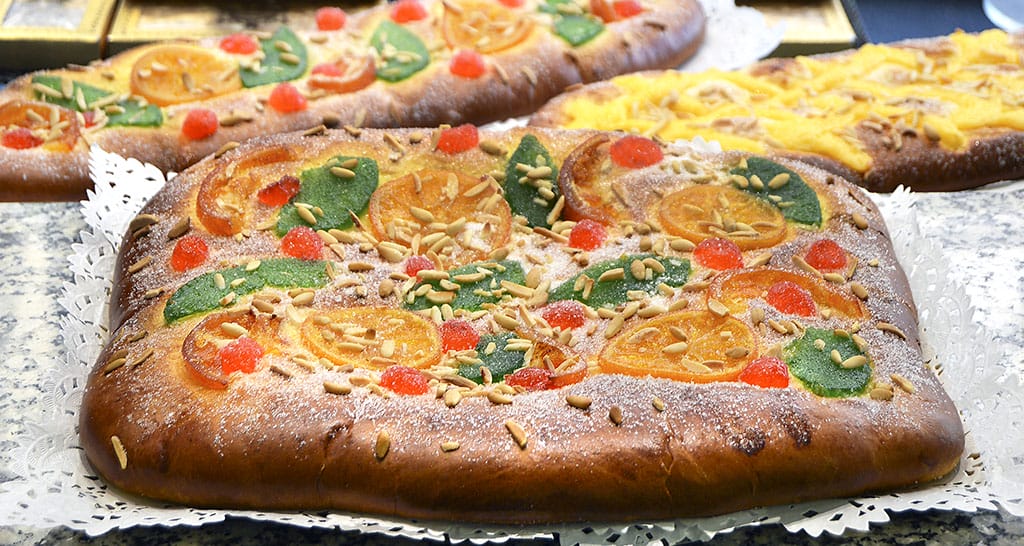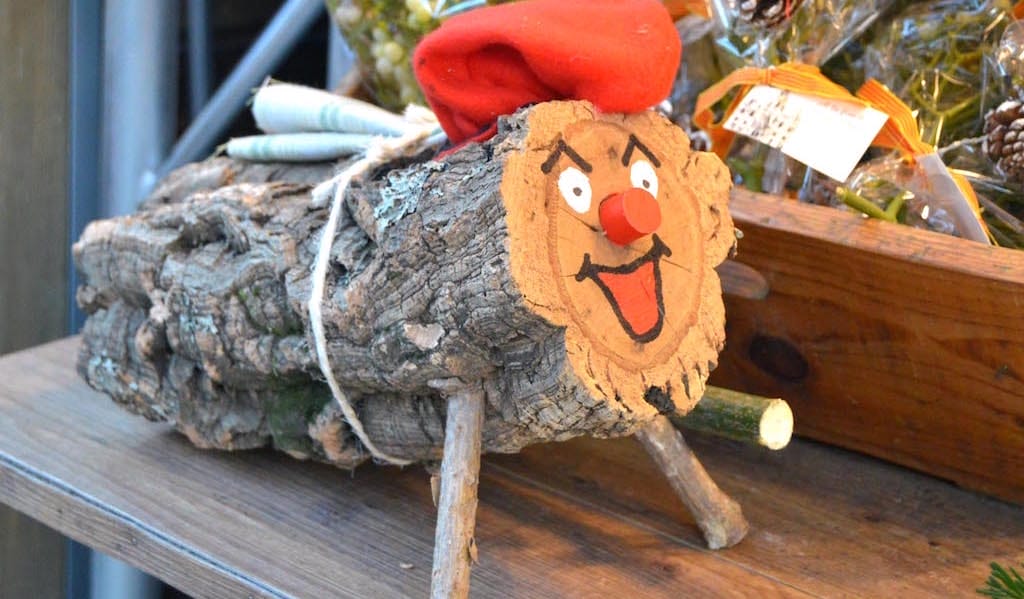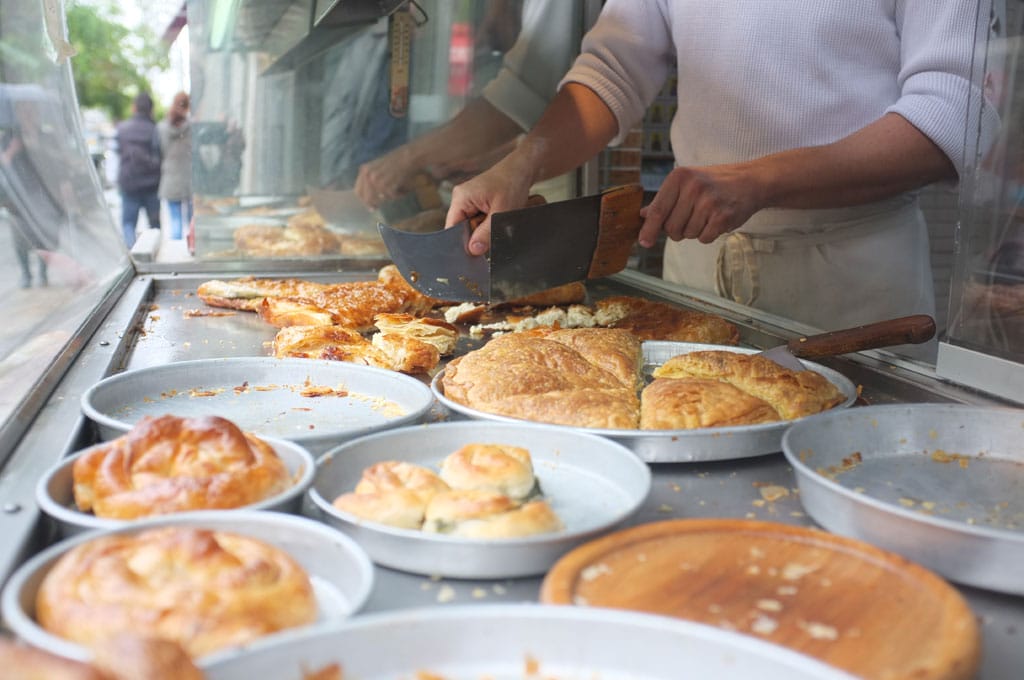On the night of June 22, a fire is lit at the top of Canigó mountain in the Pyrenees. All through the night, hundreds of volunteer torchbearers carry the flame to towns and villages throughout the four provinces of Catalonia. The arrival of the flame the next day signals the start of the Revetlla de Sant Joan (St. John’s Eve celebration). Bonfires, firecrackers and fireworks light up the night, and people while away the hours drinking, eating and dancing in public squares and beaches or at parties.
Fire, noisemaking and dancing are the main ingredients of St. John’s Eve, the Christian adaptation of ancient pagan celebrations of the summer solstice. But this is also a time for gathering medicinal herbs, for this special time of year purportedly intensifies the plants’ healing and beneficial properties. In fact, in Spanish, the name of all these nocturnal celebrations and dances is verbena, just like the aromatic plant. In Catalonia, these summer herbs and fruits – like green walnuts – are used to make the popular liquor ratafia.
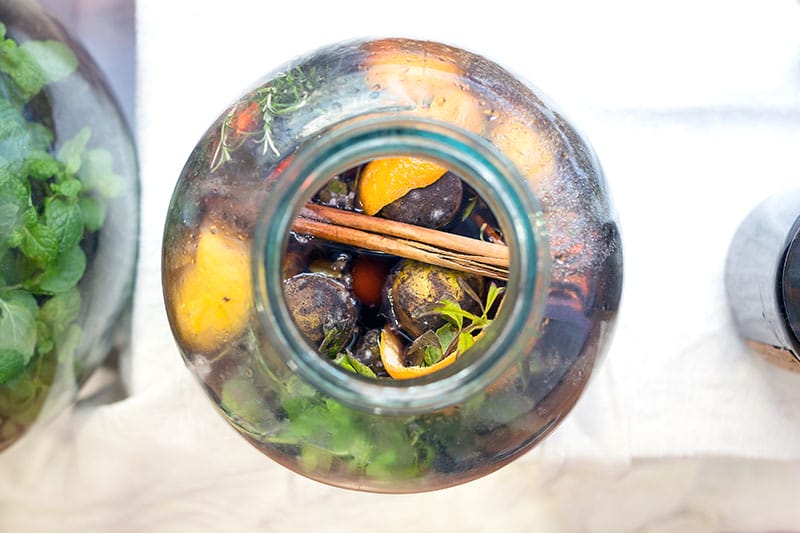
After all the ingredients are collected – people begin preparing this liquor any time in June or early July – they are placed in a large bottle with aiguardent, a distilled spirit. After 40 days of maceration in sol i serena (“sun and shadow”), which takes us into fall, the ratafia is ready. (Some villages, such as Santa Coloma de Farners, host a ratafía festival the first week of November.)
The main culinary distinction of the Revetlla de Sant Joan, though, is coca de Sant Joan, a sweet pastry that is a modern relative of the round cakes prepared by ancient Romans for these solstice celebrations. Similar to brioche, this long, flat sweet bread is found on every Catalan dinner table with cava or sweet wine on this night – as well as lunch the next day. The most characteristic coca for this holiday is flavored with anise and orange blossom water and decorated with candied fruit, chopped almonds and Mediterranean pine nuts (an exquisite version can be found at the small pastry shop Fábrega). Other variations might call for custard, marzipan, puff pastry or llardons (pork cracklings), or perhaps whipped cream or cabello de angel (angel’s hair), a type of pumpkin conserve.
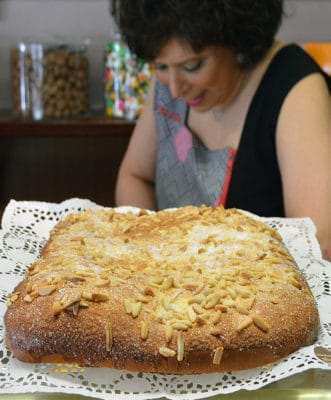 In 1924, Catalan chef Ignasi Domenech was the first to publish a recipe for coca de Sant Joan. According to him, the coca must be twice as long as it is wide. Renowned food writer Vázquez Montalban asserted that these cocas are a must not only for St. John’s Eve, but also for the feasts of Sant Pere (St. Peter, June 29) and Sant Jaume (St. James, July 25), and in fact, for every special day – diada in Catalan – in the event that you don’t make it to pastry shops and bakeries by June 23.
In 1924, Catalan chef Ignasi Domenech was the first to publish a recipe for coca de Sant Joan. According to him, the coca must be twice as long as it is wide. Renowned food writer Vázquez Montalban asserted that these cocas are a must not only for St. John’s Eve, but also for the feasts of Sant Pere (St. Peter, June 29) and Sant Jaume (St. James, July 25), and in fact, for every special day – diada in Catalan – in the event that you don’t make it to pastry shops and bakeries by June 23.
You can find coca de Sant Joan in bakeries all over Barcelona, but we’ve rounded up a few of our favorites (see Map).
 December 2, 2021 Caga Tío
December 2, 2021 Caga Tío
Caga Tió, Tió de Nadal
No cagues arengadas
Que són saladas
Caga torróns
Que són més […] Posted in Barcelona April 1, 2024 Pastiera
April 1, 2024 Pastiera
Like the Proustian madeleine, sweets can stir up all kinds of feelings in the minds of […] Posted in Naples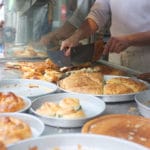 June 2, 2021 CB on the Road
June 2, 2021 CB on the Road
Like so many other Greek specialties, bougatsa has a long history, in this case one that […] Posted in Athens
Published on June 22, 2017
Related stories
December 2, 2021
BarcelonaCaga Tió, Tió de Nadal No cagues arengadas Que són saladas Caga torróns Que són més bons It’s not a carol, but it is likely the most popular song in Catalonia around Christmastime. Please pardon the profanity necessary in rendering a faithful translation: “Shit, Log, Christmas Log/Don’t shit herrings/Which are salty/Shit nougats/Which are better.” You…
April 1, 2024
NaplesLike the Proustian madeleine, sweets can stir up all kinds of feelings in the minds of those who eat them. In Naples, struffoli (small, round doughnuts glazed with honey) and cassata (sponge cake with ricotta and candied fruit) speak of Christmas, while chiacchiere (sugar-dusted fritters) and sanguinaccio (literally “blood pudding,” but actually made of chocolate)…
June 2, 2021
AthensLike so many other Greek specialties, bougatsa has a long history, in this case one that stretches all the way back to Byzantine times. Bougatsa is mainly a breakfast pie with a phyllo pastry made of flour, softened butter and oil that requires a great deal of skill to prepare. This pie is made and…







































